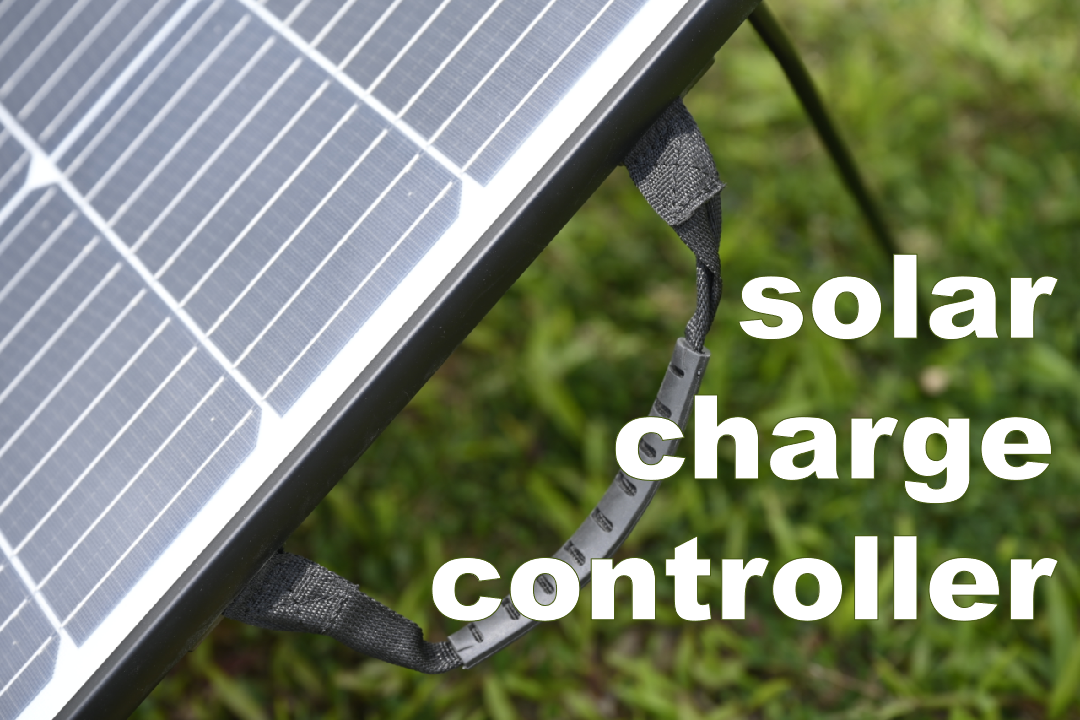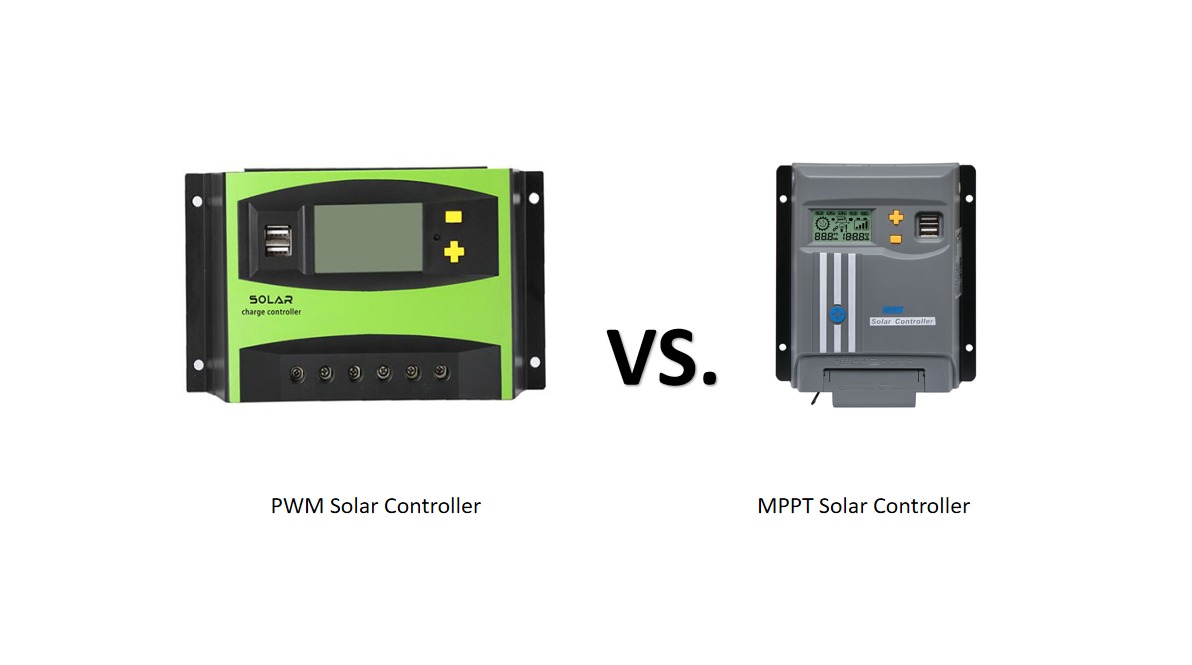A charge controller is called a solar charge/discharge controller, which is used in solar power generation systems to control multiple solar cell arrays to charge the battery as well as the battery to supply power to the load of solar inverter as automatic control equipment. It regulates and controls the charging and discharging conditions of the battery, and controls the power output of the solar cell module and the battery to the load in accordance with the power demand of the load, which is the core control part of the whole photovoltaic power supply system. When purchasing solar panels, they are usually equipped with charge controllers.
Do I really need a charge controller?
In this article, we will answer this question for you and explore the importance of a charge controller for solar panels.
What does a charge controller do?
The basic function of a solar controller is to control the battery voltage and open the circuit to stop the battery charging when the voltage rises to a certain level.
Charge controllers are used in most photovoltaic systems to protect the battery from overcharging or over-discharging. Overcharging may cause the electrolyte in the battery to vaporize, resulting in failure, while over-discharge of the battery can cause premature failure of the battery, overcharging and over-discharging may damage the load, so the controller is one of the core components of the photovoltaic power generation system, and is also the main part of the balance of system BOS (Balance Of System).
Simply put, the role of the solar controller can be divided into:
- Power regulation function.
- Communication function: simple indication function and protocol communication function, such as RS485 Ethernet, wireless and other forms of background management.
- Perfect protection function: electrical protection, reverse connection protection, short-circuit protection, over-current protection, over-charging protection, over-discharge protection and so on.
Solar Charge Controller Types
PWM (Pulse Width Modulation) Charge Controller
- PWM charge controller is one of the most common solar charge controllers.
- It maintains the state of charge of the battery by constantly switching the current on and off to avoid overcharging and over-discharging the battery.
- PWM controllers are usually suitable for smaller solar battery systems such as home lighting, small battery chargers, etc.
MPPT (Maximum Power Point Tracking) Charge Controller
- MPPT charge controllers are more advanced controllers that track the maximum power point of the solar panel to provide higher charging efficiency.
- They adjust the battery’s charge state based on the current-voltage and current of the solar panel to maximize energy transfer.
- MPPT charge controllers are typically used in large solar cell systems such as home PV systems and commercial solar power plants.
Multi-stage charge controllers
- Multi-stage charge controllers combine the features of PWM and MPPT with more advanced battery management features.
- They can automatically switch between charging modes, selecting the most appropriate charging mode based on the conditions of the solar panel and the state of charge of the battery.
- Multi-stage charge controllers are suitable for a wide range of solar cell systems and can provide better charging performance and battery life.
Smart Charge Controllers
- Smart charge controllers typically have advanced battery management features, including remote monitoring and communication interfaces.
- They can be connected to the Internet, allowing the user to remotely monitor and control the solar charging system.
- Smart charge controllers are suitable for large and complex solar battery systems such as solar microgrids and remote power supply systems.
Choosing the right type of solar charge controller depends on the size of the system, performance requirements, and budget. MPPT charge controllers are typically the most advantageous option for large PV systems because they provide higher energy conversion efficiency, but are also relatively more expensive. For smaller systems, such as open-air lighting or small battery chargers, PWM controllers may be the affordable choice.
Which is better PWM or MPPT charge controller?
The choice between a PWM (Pulse Width Modulation) charge controller and an MPPT (Maximum Power Point Tracking) charge controller depends on the specific requirements and characteristics of your solar power system. Each type has its advantages and is better suited for different situations:
PWM Charge Controller
PWM controllers are generally more affordable than MPPT controllers, making them a budget-friendly choice for small-scale solar systems.
They suit smaller solar installations, like garden lighting or small battery charging applications.
PWM controllers are less efficient than MPPT controllers in converting solar energy into usable power. They work by reducing the voltage of the solar panel to match the battery voltage, which can result in some power loss, especially when the solar panel voltage is significantly higher than the battery voltage.
PWM controllers are simple to use and are often a good choice when cost is a significant factor, and the solar system’s size and energy requirements are modest.
MPPT Charge Controller
MPPT controllers are highly efficient and can maximize the energy harvest from solar panels. They dynamically adjust the voltage and current to operate the solar panels at their maximum power point, ensuring optimal energy conversion.
They are particularly beneficial in larger solar systems and those with varying sunlight conditions or partial shading. In such situations, MPPT controllers can significantly increase the overall energy yield compared to PWM controllers.
MPPT controllers are more expensive than PWM controllers, but the increased energy harvest can result in a faster return on investment (ROI) in larger systems.
They are also better suited for grid-tied or off-grid systems where maximizing the energy output is critical.
If you have a small solar system with a limited budget and consistent sunlight conditions, a PWM charge controller may be sufficient.
For larger systems, those in areas with varying sunlight, or where maximum energy production is essential, an MPPT charge controller is generally the better choice due to its higher efficiency and energy optimization capabilities.
Why do you need an MPPT charge controller?
MPPT charge controller is essential when you want to maximize the energy output and efficiency of your solar power system. It is particularly valuable in larger systems, areas with variable sunlight conditions, or situations where optimal energy harvesting is crucial for cost savings and energy sustainability.
Why is a charge controller essential for solar panels?
A charge controller is essential for the safe, efficient, and reliable operation of solar panels in off-grid, grid-tied, or hybrid solar systems. It protects batteries from overcharging and over-discharging, optimizes energy harvest, enhances system efficiency, ensures system safety, and contributes to the long-term durability of the entire solar power system.
- Battery Protection
In off-grid and hybrid solar systems, solar panels often charge batteries to store excess energy for use during periods of low sunlight or at night. A charge controller regulates the charging process to prevent overcharging, which can damage the batteries, reduce their lifespan, and create a safety hazard.
- Preventing Over-Discharge
Charge controllers also prevent the batteries from being over-discharged, which can lead to irreversible damage and significantly reduce battery capacity. By disconnecting the load when the battery voltage drops below a certain level, the controller helps maintain battery health.
- Optimizing Energy Harvest
Charge controllers, particularly Maximum Power Point Tracking (MPPT) controllers, maximize the energy harvested from solar panels. They continuously adjust the voltage and current to operate the panels at their maximum power point, ensuring that the system extracts as much energy as possible from the available sunlight.
- System Safety
Charge controllers provide critical safety features. They protect against short circuits, reverse polarity connections, and other electrical faults that could potentially damage the solar panels, wiring, or other components of the system. This safety is essential for preventing accidents and fires.
- Enhancing System Efficiency
By regulating the charging process and optimizing the energy flow, charge controllers improve the overall efficiency of the solar power system. They ensure that the energy generated by the solar panels is used effectively and reduce energy losses due to overcharging or undercharging.
- Adaptation to Environmental Conditions
Charge controllers can adapt to changing environmental conditions, such as variations in sunlight intensity and temperature. They adjust the charging parameters to maintain optimal battery health and maximize energy production under varying circumstances.
- Compatibility with Different Battery Types
Solar charge controllers are available in various models designed for specific battery types, including lead-acid, lithium-ion, gel, and AGM batteries. This allows users to choose the controller that matches their battery chemistry and ensures proper charging.
- System Longevity
Properly managing the charging and discharging of batteries through a charge controller helps extend the lifespan of both the batteries and the solar panels. By preventing excessive stress on these components, the controller contributes to the long-term reliability of the entire solar power system.
Summary
The role of a charge controller in a solar power system cannot be overstated. It serves as the guardian of your solar panels and batteries, ensuring their efficient operation, longevity, and safety. By preventing overcharging and over-discharging, optimizing energy harvesting, and enhancing system efficiency, the charge controller acts as the linchpin of the entire photovoltaic power supply system.
Whether you choose a PWM controller for smaller systems with budget constraints or opt for an MPPT controller for larger installations requiring maximum energy production, the decision to include a charge controller in your solar setup is a fundamental one. It not only safeguards your investments but also paves the way for sustainable and efficient energy utilization, contributing to a greener and more eco-friendly future powered by the sun.












